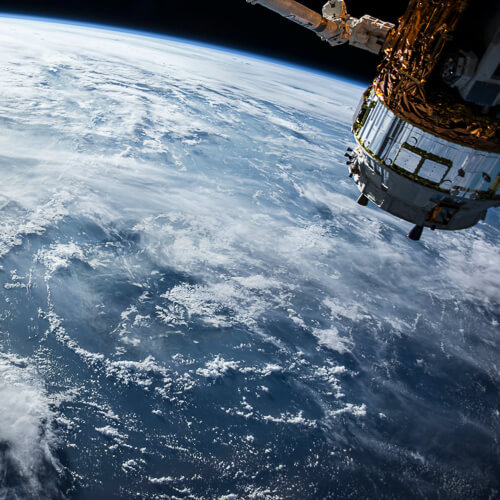
Believe it or not, the legacy satellite sector doesn't think it's roadkill – orbitkill? – for the brave new world of Musk and Bezos.
The big global players don't say the new constellations such as Starlink, Kuiper and OneWeb aren't a threat.
Figure 1:  View from above: Traditional satellite providers appear to be sanguine about the current wave of LEO upstarts.
View from above: Traditional satellite providers appear to be sanguine about the current wave of LEO upstarts.
(Source: NASA)
But speaking at an industry panel Tuesday, industry execs make some sharp points about the competitiveness of the low-earth satellite fleets.
Losing streak
The first point is they don't see how the business case stacks up. Peter Girvan, Viasat APAC vice-president, says the new LEO players are selling home terminal gear that costs around $2,000 for around $500.
"If you are absorbing $1,500 a year worth of subscriber acquisition cost, you have to sell a lot of $50 or $40 or $30 months to get your $1,500 back," he said.
By contrast, he said, acquisition costs for GEO providers like Viasat were in the "hundreds rather than the thousands" per subscriber.
"If you want to move into residential you've got to have a low-cost bit. You can't be subsidizing hundreds of thousands of terminals," he said.
He also points out that the LEOsat providers have to bear the cost of replacing their craft every five years.
"Putting up 30,000 satellites, replacing each every five years. Over the 15 years of a GEOsat that's 90,000 satellites."
"I think everyone is waiting to see what the true cost of the LEO constellations will be once they hit commercial service."
Patently latent
Point number two is that latency, LEOsat's great technical advantage over GEO, is over-rated.
Girvan said 70% of Viasat's consumer traffic is video download, which is not latency sensitive and that while internal research shows latency is important, it's not for every customer.
The company's 600,000 residential customers cited speed, bandwidth and low cost as their priorities.
"Latency isn't in the top three of things they want."
Which leads to point three: satellite networks are becoming more hybridized and virtualized. As with other telcos, satnets are moving to the cloud, which gives them a flatter structure, lower latency and greater flexibility.
They're taking advantage of software-defined architecture and smart network management tools to start running hybrid networks – for example, integrating GEO and LEO, or with terrestrial 5G.
This allows them to move capacity to where it is needed. Terry Bleakley, senior vice-president at Intelsat, points to Indonesia, a market suited to satellite because of its island geography.
But for LEO-only providers much of the time their beams are over the water.
"If you're relying only on LEO you're going to struggle," he thinks.
He said LEOsats spread their capacity evenly, regardless of population on the ground, whereas "hybrid networks with high throughput and software-defined capabilities can divert capacity to where it is needed."
Going shopping
Point number four is market access.
Bleakley says Indonesia is probably the largest market by population that LEO players can gain entry to.
Among the big markets around the world, China is almost certainly off-limits, while India and Russia are difficult to break into.
Want to know more about satellite? Check out our dedicated satellite content channel here on Light Reading.
Bleakley said Intelsat took four years to get approval for a gateway in India – almost the entire lifespan of an LEOsat.
For a global satellite network, those are huge geographical holes that also represent wasted capacity and investment.
Related posts:
— Robert Clark, contributing editor, special to Light Reading
Read more about:
AsiaAbout the Author(s)
You May Also Like











